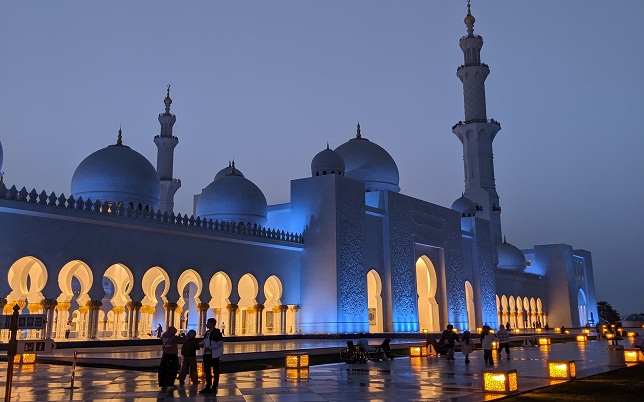No trace of the formal educational institutions or madrasahs (as they later came to be known) is to be found during the early days of Islam. The first attempt to bring the study of different branches of learning under a systematic and standardized institution was made in the fourth century after Hijrah (Muslim calendar) when such a madrasah was established at Nishapur. Later on, the two institutions which achieved everlasting fame were the Nizamiyah and Mustansaryah Universities of Baghdad.
In India the early Muslim rulers do not appear to have been conversant with such formal educational institutions; as they encouraged learned persons as well as those adept in any art of craft through liberal grants and benefactions to impart their knowledge and skill privately to students having an aptitude for the same.
Likewise the religious doctors too, taught the students privately either at their own houses or in the mosques and monasteries. Most of them did so only to seek the pleasure of God and they never accepted anything for the service rendered nor did they approach the kings and grandees for financial help in any form.
Nevertheless, a number of later Muslim rulers and their nobles established numerous educational institutions which provided not only free boarding and lodging to the teachers and students but they also paid handsome stipends to attract students to these institutions. However we are mentioning here only the well-known madrasahs of the medieval India.
Contents
Educational Institutes in Sindh by Muslim Rulers of India

Madrasah Firuziah
Madrasah Firuziah was founded by Nasiruddin Qabacha when he was governor of Multan and Uch. As stated by Muhammad bin Abduh Wahab Qazwaini in his marginal commentary on Aufi’s Lubab-ul-Albab, a reputed scholar Minhajuddfn Abu-Amr Uthman bin Muhammad Juzjani was appointed as the head of this institution in 1224.
Madrasah Multan
Madrasah Multan was located in the monastery of Sheikhul-lslam Bahauddin Zakarya, the renewed mystic of Multan. Sheikh Musa and Sheikh Mujiduddin taught in this madrasah while Sheikh Abul Fateh bin Muhammad bin Zakarya was the head of the monastery. It has been mentioned in Jami-ul-Uloom that Sheikh Jalaluddin Husain bin Ahmad Husaini of Bukhara had been a student of the above- mentioned scholars.
Madrasah Siwistan
Siwistan had a large educational institution. When Ibn Batutah visited India during the reign of Muhammad Tughlaq, he paid a visit to this madrasah in 1333. In regard to the institution he says: “I stayed for a while in the big madrasah of this city and used to sleep on the roof of the institution during my stay there.”
Madrasah Bhukkar
Madrasah Bhukkar was founded, according to Tuhfatul-Kiram (Vol. III, p. 206.), by Najmuddin Muhammad Rafi of Sindh in 1747 while his Sheikh (mentor) Muhammad Moin bin Muhammad Amin was still alive. Maulana Muhammad Moin was a noted scholar and mystic of his time. A disciple of Shah Waliullah, he died in 1747. (Nuzhat-ul- Khawatir)
Educational Institutes in Kashmir by Muslim Rulers of India
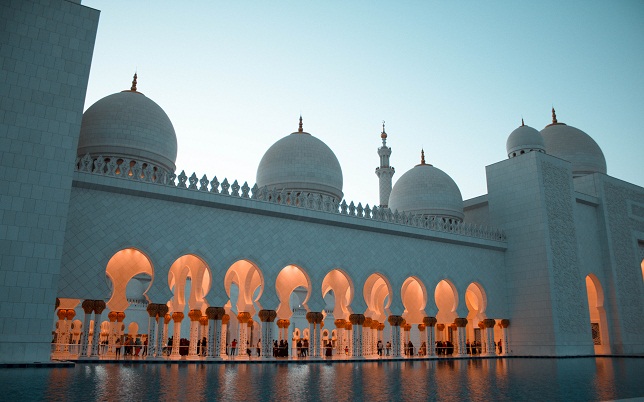

Madrasah Qutbuddin Purah
Sultan Qutbuddin of Kashmir (d. 1393) had established a big madrasah at Qutbuddin Purah which, as stated in Hadaiq-ul-Hanfiyah, produced the noted Traditionist, Sheikh Jauhar besides several other reputed doctors of religion.
Madrasah of Sultan Zain-ul-Abdin
Sultan Zain-ul-Abdin of Kashmir was a patron of learning who established quite a few madrasahs. One of these, and a big one too, was the madrasah located near the imperial palace. The teachers appointed by him were men of learning who were paid handsome remuneration.
The Sultan had also ordered to set up pathshalas and maktabs for the Hindus and Muslims in the temples and mosques throughout his realm and had earmarked the land revenues derived from certain areas for the maintenance of these schools. (Tarikh Kashmir)1 .
Madrasah Srinagar
Mirza Burhanuddin Tuni, also known as Fadil Khan, built a large madrasah at Srinagar while he was governor of Kashmir during the time of Aurangzeb. A mosque and a hammam were also constructed by him as an adjunct to the madrasah. He attached some cultivable land to this educational institution for its maintenance.2
Educational Institutes in Punjab by Muslim Rulers of India


Madrasahs of Lahore
Muhammad Fadil of Badakhshan who was the Superintendent of Justice in the military cantonments during the reigns of Jahangir and Shahjahan, established this educational institution in the year 1634. Himself an erudite scholar, Muhammad Fadil used to deliver lectures in the institution. A number of scholars had the honour of being taught by him (Mathar-ul-Umra).3
In another madrasah at Lahore the governor of the province Nawab Qilich Khan Indjani, used to teach law, exegesis and Traditions (Mathar-ul-Umra).4
Lahore had yet another big madrasah established by Wazir Khan near his famous mosque. Two scholars had been appointed in this institution by the founder who also created a trust for its maintenance.
Madrasah Sialkot
The madrasah was established by an eminent scholar Abdul Hakim bin Shamsuddin who was also the author of several books and he was twice weighted in silver by Emperor Shahjahan5. Shahjahan gifted out a number of villages for meeting the recurring expenses of the madrasah.
Allama Abdul Hakim taught in this madrasah for a long time and after his death his sons and grandsons continued to shed the light of guidance and learning in this institution.
Madrasah Thanesar
The madrasah was located near the tomb of Sheikh Abdur Rahim (popularly known as Sheikh Chilli). The building of the madrasah was a masonry structure and occupied an area of 174 sq. feet and had three arcades on each of its three sides. On its eastern side, stood a big gate with a row of rooms for the students. The institution’s building is reported to have been built by Dara Shikoh in 1650. This madrasah was converted into a Gurudwara during the Sikh regime In Punjab. 6
Madrasah Narnaul
Madrasah Narnaul was a big institution attached to the monastery of Sheikh Nizamuddin of Narnaul. The madrasah produced a number of literary scholars. This madrasah was built by Sher Shah Suri in 1520 near the tomb of his grandfather.7
Educational Institutes in Delhi by Muslim Rulers of India
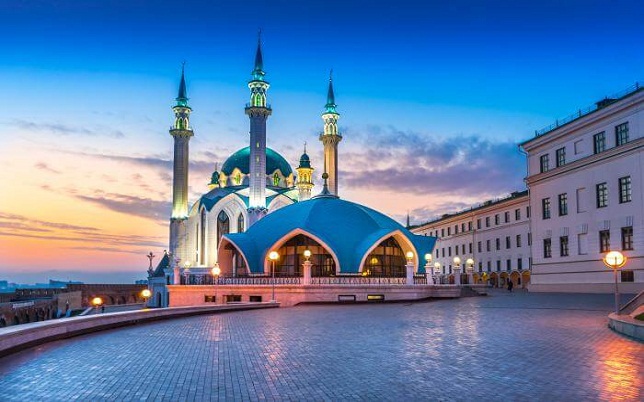

Madrasah Muizziah
Madrasah Muizziah was located in a big and fortress like building adjacent to the great mosque in which the Qarmatian fanatics fell upon a Friday congregation in 1237 when they made an attempt to overthrow the established religion during the reign of Razia Sultana. Minhajuddin states in the Tabqat-i-Nasiri8 that the Qarmatians attacked Madrasah Muizziah also as they thought it to be a moque.
We have not been able to find further details in regard to this institution but as far as we can establish it was founded by Sultan Qutbuddin Aibak and named after his master Shahabuddin Ghori whose title was Muizuddin. Maulana Badruddin Ishaq of Bukhara was one of its teachers.
Madrasah Nasiriyah
This educational institution is believed to have been established by Sultan Shamsuddin Iltutmish who named it after his father Nasiruddin Mahmud. Qazi Minhajuddin Uthman bin Muhammad Jauzjani was appointed head of this madrasah by Razia Sultana in 1226.9
Madrasah Firuz Shah
Firuz Shah made arrangements for the education of his subjects on a vast scale. He built a magnificent building for this institution of higher studies near Hauz Khas frorn which a canal supplied fresh water to the madrasah.
Ziauddin Barni writes in Tarikh Firuz Shahi that all secular and religious sciences were taught in this madrasah. Sheikh Jalaluddin Rumi (another scholar, not to be confused with the Persian mystic and poet of the same name) and his disciple Maulana Yusuf Jamal Husaini were the two renowned teachers of this madrasah.10
Another madrasah was built by Firuz Shah within the Siri Fort near the big reservoir. The building of this madrasah too is reported by Barni to be quite impressive. Maulana Najmuddin of Samarkand was one of the teachers in this institution. 11
Firuz Shah built yet another madrasah at Delhi near the tomb of his son Fateh Khan (d. 1374). The headstone installed at the grave of Fateh Khan bore as mentioned in Firishta, the impression of the holy Prophet’s foot. This slab known as Qadam Rasul, was brought from Arabia by the mystic Sheikh Jalaluddin Husain al-Husaini of Bukhara, also known as Makhdum Jahanian Jahan Gasht.
Madrasah Tulanabbi
The madrasah was established by Sikandar Lodhi for Maulana Abdullah Tulanabbi, a scholar and man of letters, who had emigrated to Delhi. Badauni writes in the Muntakhab-ut-Twarikh that the King awarded the title of Malik-ul-Ulama to Maulana Tulanabbi and appointed him as the Principal of this College.
A large number of students who later rose as eminent scholars had the good fortune of being taught by the Maulana Tulannabi who revised and enlarged the then prevalent curriculum by introducing some of the difficult books on logic and philosophy. Before Maulana Tulanabbi’s reform the madrasah had only Sharh Shamsiah as the text book in logic and Sharh-us-Sahaif in dialectics.12
Madrasah of Maulana Samauddin
Maulana Samauddin (d. 1495) had also set up a madrasah at Delhi in which he taught for a long time. After him, Sheikh Fateh Ullah, Sheikh Abdul Ghafoor and Mufti Jamaluddin, the grandson of Maulana Samauddin kept the torch of learning aloft in this institution benefiting a large number of students.
Madrasah Sheikh Farid
It was a big institution named after the well-known mystic Sheikh Fariduddin Ganj Shakar whose shrine is at Ajodhan. Sheikh Alauddin founded the madrasah to commemorate the memory of his grandfather, Tajuddin al-Faruqi during the reign of Humayun in 1534. The ruins of the Madrasah can still be seen near the tomb of its founder.13
Madrasah Maham Begum.
The wet nurse of Emperor Akbar, Maham had built a mosque and a madrasah in 1561 near Humayun’s fort known as Dinpanah. The ruins of this monument are traceable to this day.14
Madrasah Sheikh Abdul Haq Muhaddith
Jahangir founded this institution of higher learning alongwith a supporting trust for Sheikh Abdul Haq bin Saifuddin of Delhi who was the well known scholar of Hadiths. After the death of the Sheikh Saifuddin, his descendants Mufti Nurul Haq, Sheikh Ali Muhammad, Sheikh Muhammad Hashim and Sheikh Abu Raza devoted their lives to the teaching and preaching of Hadiths in this institution.
To this madrasah goes the credit of introduction, growth and popularization of the science of Hadiths in India, since it had been the Alma Mater of many eminent scholars from the day it was established.
Madrasah Shahjahani
Known by the name of Darul-Baqa, this madrasah was founded by Shahjahan sometime between 1649 and 1658, not far from the Jama Masjid. Maulfina Yaqub of Bayanah was appointed as the head of the institution by the Emperor.
After the madrasah fell into ruins, Mufti Sadaruddin Azurda (d. 1842) had it rebuilt and appointed teachers for the instruction of the students. The madrasah was however completely demolished during the first war of independence waged in 1857.
Madrasah Fatehpuri Begum
One of the queens of Shahjahan, Nawab Fatehpuri Begum, who had built the delightful Fatehpuri mosque also constructed a madrasah near it in 1649. The building of the madrasah had been made of marble and red sandstone. The mosque contains lodges for the teachers and students while some shops which have been constructed facing the market have been rented out to meet the recurring expenses of the madrasah. The income then fetched from the shops was rupees six hundred per mensem.
Madrasah Akbrabadi Begum
Another queen of Shahjahan, Akbarabadi Begum, built a mosque and a madrasah at Delhi in 1630. It was a splendid masonry structure with lodges for the teachers and the students, and had shops around it to meet the expenses of the madrasah.
In this institution the noted Traditionist and commentator of Quran, Shah Abdul Qadir of Delhi, taught the students for a long time. The madrasah continued to function till the last days of Moghul rule but in the upheaval of 1857 the Britishers completely demolished the madrasah leaving no trace of it.
Madrasah Mir Jumla
It was founded by Mir Jumla, one of grandees of Aurangzeb. Although the madrasah fell into ruins in due course of time, the locality was still known by the name of the madrasah for a long time.
Madrasah Inayat Khan
It was also an educational institution of Delhi, but its ruins are not traceable now.
Madrasah Ghaziuddin Khan
A big edifice of red sandstone was built in 1751 by Ghaziuddin Khan, earlier the Prime Minister of Ahmad Shah Bahadur and later of Alamgir II, outside the city near the palace built by his grandfather Ghaziuddin Khan Firuz Jang.
The madrasah had pillared varandahs on its three sides and a magnificent mosque on the western part which contained the tomb of Firuz Jang within an enclosure. Nawab Fazal Ali Khan, then a minister at the court of Nawab of Lucknow gave a sum of Rs. 1,70,000 to the East India Company to be held in trust for running this madrasah but the Company appropriated the funds for establishing an English teaching school. 15
Molvi Abdul Qadir of Rampur writes in his book Roznamah that Sheikh Nazar Muhammed of Delhi was a teacher in this madrasah.
Madrasah of Ghaziuddin Khan’s Mother
Ghaziuddin Khan’s mother had also founded a madrasah In Delhi. Molvi Abdul Qadir of Rampur says that the Madrasah was known after the name of Maulana Fakhruddin of Delhi who used to teach in it.16
Madrasah Shah Wali Ullah
This was the fortunate institution where the great savant, thinker and reformer Shah Wali Ullah of Delhi taught the students. Shah Abdur Rahim, father of Shah Wali Ullah used to put up at Mehdiyan, outside Delhi, near his ancestral cemetery.
After his father’s death, Shah Wali Ullah moved within the city where Muhammad Shah made over a big mansion to him for starting a madrasah. This institution was known as the old madrasah where Shah Wali Ullah delivered lectures to his students throughout his life.
After his death a new madrasah was constructed on the site of the older one where Shah Abdul Aziz taught until he lost his eyesight. Shah Rafiuddn and Shah Abdul Qadir, the two brothers of Shah Abdul Aziz continued to teach in the madrasah.
After their death the responsibility was taken up by Shah Muhammad Ishaq, Shah Muhammad Yaqub and Sheikh Makhsus Ullah the descendants of Shah Abdul Aziz. This was one of the central seats of learning in India which popularised religious sciences in India.
Madrasah Bazar Dariba
Near Dariba market in Delhi, by the side of Sunehri Masjid, Nawab Roshan-ud-Daula had got the imposing edifice of this madrasah built in 1721 during the reign of Muhammad Shah. The madrasah functioned till the termination of the Moghul rule in Delhi because the Britishers converted the madrasah into a police out-post.
Madrasah of Iradatmand Khan
This madrasah was founded in 1722, during the reign of Muhammad Shah, near the mosque of Bazar Dariba, by Nawab Sharaf-ud-Daula Iradatmand Khan. Sir Syed Ahmad Khan has given an account of this madrasah in the Athar-us-Sanadid.17
Bashiruddin has given the description of another madrasah established by Nawab Sharaf-ud-Daula in mohalla Rudgardan in the Tarikh Dehli. The locality where this institution existed is still known by its name but only a big gate of the madrasah is all that stands now to remind us of its existence.18
Madrasah Shah Husain
Shah Husain built this madrasah and a mosque in Bulbil Khana in 1735 but the mosque was known after the name of Nawab Qutbuddin Khan.19
Bashiruddin has made a mention of another educational institution founded in 1837 at Charkhi Walan in Delhi by one Saddhu Ghosan.
Educational Institutes in Agra by Muslim Ruler of India
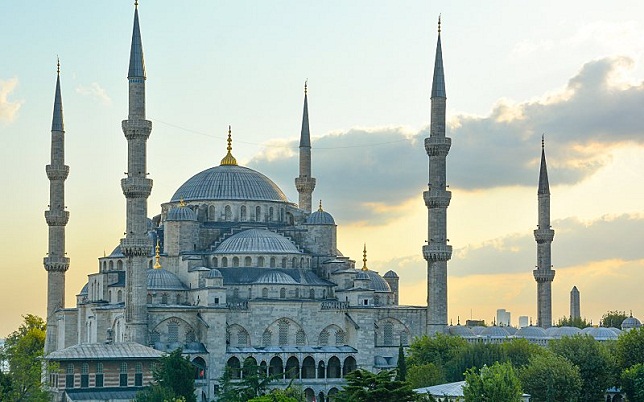

Madrasah Sheikh Rafiuddin
The institution was located within the city of Agra and named after Sheikh Rafiuddin Husaini of Shiraz (d. 1538), a scholar who had specialised in the science of Hadiths. He migrated to India during the reign of Sikandar Lodhi and was acknowledged as the foremost savant of his time.
Madrasah Zainiyah
The madrasah together with a mosque was built by Sheikh Zainuddin Khawwafi in 1534. He was buried within the quadrangle of the mosque. 20
Madrasah of Mufti Abul Fath
This was the premier educational institution of Agra presided over by Mufti Abul Fath bin Abdul Ghafoor of Thanesar (d. 1578), where he lectured for fifty years. He was also responsible for directing the educational activities at the capital of the empire.21
Madrasah Akbarabad
The madrasah was founded by Akbar. The ruins of its main building were traceable before the holocaust of 1857. The mosque attached to the madrasah still remains and the locality is known by the name of the madrasah.
Madrasah Khas
This madrasah was so named because of its thatched roofing and walls made of reeds and straw. The madrasah was established by Maulana Alauddin Lari in 1561 during the reign of Akbar.
Madrasah Jami Masjid
Jahanara, the daughter of Shahjahan built this madrasah opposite the fort at Agra and created a trust for its maintenance.
Madrasah Akbar
Akbar had built this madrasah on the top of the hillock at Fatehpur Sikri at the instance of Sheikh Salim bin Bahauddin Chishti. The emperor also appointed several theologians as teachers of this institution at handsome remuneration.
Madrasah Abul Fadl
This madrasah was also at Fatehpur Sikri. Its ruins can still be seen.
Madrasatul Banat
This was also at Fatehpur. Its building was a masonry structure, ornately carved and erected near the populated area. Its ruins are still extant. 22
Madrasah Gwaliar was founded by Amir Rahim Dad, a noble in the court of Babar.
Madrasah Kannauj
It was established by Sheikh Ali Asghar of Kannauj (d. 1127) who taught in the school till his death. Thereafter, his son and grandson Maulana Rustam Ali (d. 1764) and Maulana Abdul Basit (d. 1808) respectively continued to teach in the madrasah which produced many scholars.
Madrasah Farrukhabad
The madrasah was built by Nawab Muhammad Khan Bangash, the founder of Rohilla State. The locality where the school existed, is still known by its name.
Fakhr-ul-Marabe
It was the name of another madrasah established in 1809 by Mufti Waliullah of Farrukhabad. 23
Educational Institutes in Jaunpur, Bihar and Bengal by Muslim Rulers of India


Madrasah Qazi Shahabuddin
Sultan Ibrahim Sharqi, the great patron of learning had built this madrasah for Qazi Shahabuddin of Daulatabad. It played an important part in the spread of sciences and learning. The madrasah also had lodges for the residence of students.
Madrasah Raji Begum
The school was founded by Raji Begum, queen of Mahmud Shah Sharqi (1436-1458) along with a mosque in 1442. She also granted stipends to the teachers and the students of the madrasah which continued to function until Sikandar Shah bin Bahlol Lodhi captured Jaunpur and the madrasah was razed to ground like numerous other monuments and castles of the Sharqi dynasty. 24
Madrasah Aziz Ullah
If was a big institution established in the locality called Azizullah at Jaunpur by Junaid Barlas, the governor of the place in the reign of Babur. Sheikh Aziz Ullah bin Sheikh Naim Ullah from whom the madrasah and the locality took their names, was appointed as its first Principal.
Sheikh Aziz Ullah was a progeny of Sheikh Muhammad bin Isa who was a noted mystic of the place. The madrasah fell into ruins in due course of time and was gradually turned into a cemetery.25
Madrasah Sheikh Muhammad Afzal
The madrasah was founded by the reputed scholar Sheikh Muhammad Afzal Uthmani (d. 1650). Savants like Mullah Mahmud Jaunpuri and Sheikh Mohammad Rashid, the authors of the Shams Bazgha and Rashidiya respectively, graduated from this seminary.
Madrasah Sheikh Rashid
The madrasah was located in Mohalla Mir Mast in Jaunpur where Sheikh Muhammad Rashid bin Mustafa Uthman once spread the light of learning. However we have not been able to find out the name of its founder. The ruins of the madrasah are still traceable.
Madrasah Banaras
It was established by Sheikh Nizamuddin of Banaras. One of the scholars who received his education in this school was Sheikh Tayyab bin Moin (d. 1632).26
Madrasah Patna
This was a famous centre of Islamic learning at Azimabad (Patna) with a magnificent building on an elevated place by the side of the river Ganges. It was founded in 1655 by Nawab Saifuddin Khan who had also constructed a mosque and residential quarters for the teachers and students and created a trust consisting of several villages for the maintenance of the madrasah.
The author of Risala Qutbia states that two of its teachers Syed Zarif and Syed Kamal were disciples of Sheikh Nizamuddin of Lucknow. Siyar-ul-Mutakhirin however, gives the name of its another lecturer, Maulana Tajuddin of Oudh.
Madrasah Danapur
Located at DanSpur about 10 Kms. from Patna, the school was founded by Nawab Asaf Khan. The madrasah was located in a building of considerable strength and elegance whose foundation was laid by Nawab Asaf Khan but was ultimately brought to completion by Nawab Haibat Jang. The latter also constructed a beautiful mosque near the madrasah.27
Madrasah Shahabad
The madrasah existed in the suburbs of Shahabad (Arrah). It had once had a big trust consisting of several villages, created by Shah Alam. It also had a big library and its annual expenditure amounted to five thousand rupees.
Madrasah Aurangabad
This educational institution which still exists, is in Aurangabad town of district Gaya. The annual income from the trust created for its maintenance was rupees four hundred per annum.
Rangpur Madrasahs
Several educational institutions were started in Rangpur district of Bengal by Muhammed Bakhtiyar Khilji but none of them now exist nor the trace of their buildings is to be found.
Educational Institutes in Malwa and Khandesh by Muslims Rulers of India
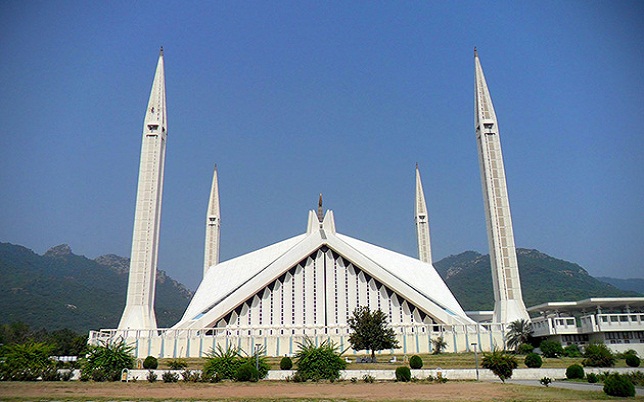

Madrasah Mandu
It was in the capital of Ghauri kings of Malwa. It was perhaps founded by Hushang Shah who died in 1435 and, as stated in Firishta, was laid to rest in the same madrasah.28
Madrasah Mahmudiya
It was founded by Mahmud Shah Khilji I in the year 1446. He also fixed a generous allowance for the teachers and students of the madrasah.
Madrasah Ghiyathiya
This institution was also located in Shadiabad at Mandu and was founded by Ghiyathuddin Khilji as stated by Asfi in the Zafar-ul-Waleh.29
Madrasah Zafarabad
Ghiyathuddin Khilji established this madrasah at Zafarabad. According to the author of Athar-ul- Khair the madrasah existed during the reign of Mahmud Shah II.
Madrasah Ujjain
The madrasah was founded by one of the Khilji Sultans of Malwa. The ruins of its building are still visible.
Madrasah Sarangpur
This institution was established by one of the Khilji Sultans of Malwa. The ruins of the building still standing have the following inscription on its foundation stone:
“The foundation of this madrasah was laid within the territory held by Malik Madari Khan on 22nd of Rabi-ul-Thani in the year 897 A.H. (Hijri calendar) during the reign of the Great King, the patron of the world and religion, Mahmud Shah Khilji whom God may bless with dominion and kingdom.”
Madrasah Raisina
This madrasah with a imposing building was established at Raisina by Ghanim-ul-Mulk in 1485, which also provided residential accommodation for its students and teachers. The ruins of its decayed walls still stand to remind its existence.30
Madrasah Adilpur
The madrasah had a magnificent building and as stated by the author of Gulzar-i-Abrar 31 Sheikh Musa of Sindh was appointed as the Principal of this school by its founder Adil Shah.
Madrasah Burhanpur
The madrasah was run first by Sheikh Tahir bin Yusuf of Sind and then by his nephew Isa bin Qasim. Thereafter his descendants continued to teach in this institution for a long time.
Madrasah Anwaruddin
Another educational institution was established at Burhanpur by Nawab Anwaruddin of Gopamau, then governor of Burhanpur, who appointed Sheikh Ghulam of Gujarat as the head of the. madrasah and fixed an annual subvention of Rs. 36,000 for its maintenance.
Madrasahs of Gujarat
“In the towns of Gujarat Mahmud Shah I founded a large number of madrasahs” writes the author of Mirat-i-Sikandari, but we have not been able to find further details of these institutions.
Madrasah Uthmanpur
Sheikh Uthman32 (d. 1459) established this medrasah at Uthmanpur near Ahmadabad. Mahmud Shah I donated a large collection of valuable books from his imperial library which were given over to the madrasah by Sheikh Uthman for the use of students.
Madrasah Nahrwala
It was located by the side of Hauz Khan Sarwar outside the town of Nahrwala. Maulana Qasim bin Muhammad of Nahrwala was the head of this institution during the reign of Qutbuddin Shah of Gujarat (1451-1458).
Another Madrasah at Nahrwala was attached to the shrine of Sheikh Hisamuddin Uthman bin Daud Multani wherein the chief lecturer was Maulana Tajuddin. After his death his son Maulana Muhammad took up the responsibility assigned to his father. A number of religious scholars graduated from this institution.
Madrasah Ahmadabad
It was an important institution catering for the need of higher education. It was located at Sarkhich, a suburban town of Ahmadabad. Faqih Hasan Arab, a scholar of Islamic jurisprudence, taught the students in this madrasah during the reign of Mahmud Shah I and his son Muzaffar Shah II. As stated by the author of Gulzar-i-Abrar, the madrasah produced a number of erudite scholars. ‘
Madrasah Maulana Muhammad Tahir of Patan
The Maulana had founded a madrasah in his home town on which he spent all that he had inherited from his father. According to the author of An-Nur-al-Safir33, the Maulana took special pains to educate a number of brilliant students who specialised in different branches of Islamic sciences.
Madrasah Allama Wajihuddin
The founder of the madrasah, Allama Wajihuddin of Gujarat, instructed his students as well as provided them with boarding and lodging. When the Allama died, he was laid to rest in the courtyard of the madrasah. Later on Sadiq Khan constructed a dome on the grave of Allama Wajihuddin and rebuilt the madrasah besides providing stipends for the students.
Author of Tuhfatul-Kiram reports that the progeny of Allama Wajihuddin continued to teach in the madrasah after his death.
Madrasah Ahmadabiad
Saif Khan Jahangiri built a large educational institution opposite the Ahmadabad Fort in 1622 when he was posted as the Revenue Collector of the province.34
Madrasah Sheikh-ul-Islam Khan.
The building of the College was built by Maulana Ikramuddin also known by the title of Sheikh-ul-Islam Khan during his governorship of Gujarat province. The madrasah’s building was completed in three years (1696-1699) at a cost of Rs. 1,24,000. Sheikh-ul-Islam Khan entrusted the charge of the institution to his spiritual mentor Sheikh Nuruddin bin Muhammad Saleh of Gujarat and endowed several villages for the maintenance of the madrasah.
Madrasah Haji Zahid Beg
It was founded by Haji Zahid Beg, a wealthy merchant, at Surat in 1641. The madrasah was located near the shrine of Sheikh Muhammad bin Abdullah Idur Rus and built during the time of Sheikh Jafar Sadiq Idur-Rus.35
Educational Institutes in Oudh by Muslim Rulers of India



Madrasahs of Lucknow
A big institution which produced a large number of theologians was founded by Sheikh Muhammad bin Abi Baqa (Muhammad Azam-d. 1465) while another one was established by Qazi Abdul Qadir Faruqi (d. 1664) of Lucknow. The other madrasah too turned out a number of academicians who founded several madrasahs in different cities.
Madrasah Amethi
It was established at Baruna (Amethi) by Hasan of Sarangpur. Sheikh Jafar bin Nizamuddin36 of Amethi (d. 1635) was the head of this institution which had a large building and rooms for the students. He was popularly known as Bandagi Nizamuddin. One of the prominent mystic sheikhs of his time, he had been granted a fief by Jahangir. The ruins of this school are still visible.37
Madrasah Mulla Jiwan
This was also at Amethi where it was founded by Abdul Qadir bin Ahmad of Amethi. The father of the founder, Sheikh Ahmad bin Abi Saeed (Mulla Jiwan) was the first teacher of this school after whom his descendants continued to lecture in the madrasah. 38
Madrasah Shah Pir Muhammad
This was the famous madrasah located by the side of the river Gomti which achieved great fame as an institution of higher education. It is, however, not known who founded this madrasah.
A number of eminent scholars such as Shah Pir Muhammad (d. 1673) who was a famous mystic and whose shrine still attracts large crowds, Sheikh Muhammad Afaq, Maulana Ghulam Naqshband (d. 1616), Maulana Ahmad, Maulana Ghulam Yahya of Bihar (d. 1766 AD) and Maulana Abdur Rashid instructed the students in this madrasah which was perhaps located in the Aurangzeb’s mosque known as Tila Shah Pir Muhammad Masjid.
Madrasah Firangi Mahal
It was founded by Mulla Nizamuddin of Sihali who formulated the Nizamia course of study. He started this educational institution in his own house, known as Firangi Mahal which first belonged to a European merchant and was later on given over to him by Aurangzeb. The madrasah played a memorable role in the promotion of theological learning in India.
Madrasah Mansuriya
The foundation of this educational centre was laid by Mulla Hamid Ullah bin Shukr Ullah and his son Molvi Askar Ali at Sandila in 1733. King Ahmad Shah Bahadur donated a number of villages for the maintenance of the madrasah on the recommendation of his minister Abul Mansur Khan Safdar Jang, from whom the madrasah took its name. Besides Mulla Hamid Ullah, his son Haider Ali and Maulana Bab Ullah of Jaunpur taught the students in this madrasah which produced a number of scholars.
Madrasah Bilgram
It was established by Allama Abdul Jalil Bilgrami (d. 1725) where Maulanfi Tufail Ahmad of Utraula taught the students. A number of eminent theologians graduated from this institution. This educational centre no more exists but the traces of its wrecked building still exist.
Madrasah Qazi Qutbuddin
This madrasah was at Gopa-Mau. A number of young men had gone out of its portals after completing their studies, writes the author of Tazkiratul Ansab.39
Madrasah Wala Jahia
The madrasah was established perhaps in 1785 by Nawab Muhammad Ali Khan of Gopa-Mau, then governor of Madras, in his home town. The Nawab had appointed Qazi Mustafa Ali Khan as the head of this institution.40
Madrasah Sultaniya
Hakim Mahdi Ali Khan, a vizier in the court of Sultan Nasiruddin Haider, King of Oudh, established this educational institution near the tomb of Saadat Ali Khan at Lucknow. The school building had also lodges for the students.
Hakim Mahdi Ali Khan had started another educational institution exclusively for the Kashmiri students with a staff of ten teachers. The madrasah provided free boarding and lodging to the students. Hakim Mahdi Ali Khan, who took keen interest in the affairs of the madrasah, not only frequently visited the institution to test the academic attainments of the students but also entertained them with sweets and fruits. 41
Madrasah Amjad Ali Shah
It was established at Lucknow by Nawab Amjad Ali Shah of Lucknow. Handsome remuneration was paid to its teachers among whom the two scholars of note were Syed Ahmad Ali of Muhammadabad and Mufti Abbas Tustri.
Madrasah Salon
It was located in the famous monastery of a mystic Sheikh at Salon in district Raebareli. The Moghul emperors had donated considerable landed property for the monastery which sufficed to meet the expenses of the madrasah.
Educational Institutes in Rohilkhand by Muslim Rulers of India
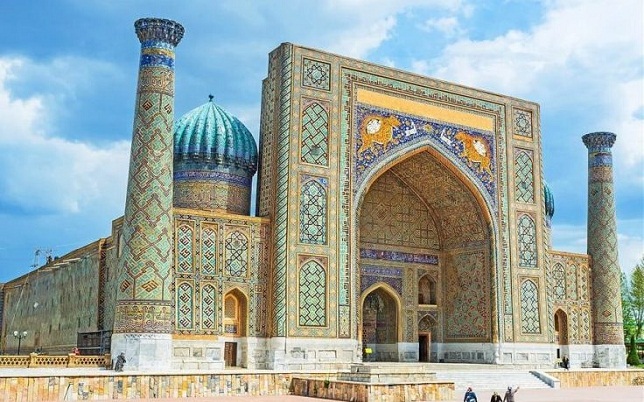

Madrasah Muizziyah
This great religious institution of Badaun was founded either by Sultan Qutbuddin Aibak or his successor Sultan Shamsuddin Iltutmish not far from the Jami Masijd which was built in 1223 AD. As stated by Hasan Sijzi in Fawaid-ul-Fuad, a large number of students came out of its portals after completing their studies.
An eminent scholar Sheikh Zainuddin lived in Madrasah Muizziyah near the Jami Masjid of Badaun, writes Sheikh Mujahid Nizamuddin Muhammad bin Ahmad. According to our information the reputed scholar Ruknudin of Badaun (who had among his students such eminent scholars as Sheikh Sirajuddin of Gazni, an author of a large number of religious treatises), was on the staff of this educational institution.
Madrasah Fateh Khan
It was at Aonla. It was established by Fateh Khan, Khan-i-Saman (Lord High Steward) and had amongst its staff Sheikh Wasi Ali bin Rahmat Ullah of Jais.42
Madrasah Zabta Khan
It was founded by Nawab Zabta Khan, son of Nawab Najib-ud-daula at Daranagar in district Moradabad. The institution could boast of having such men of calibre on its staff as Mulla Hasan bin Ghulam Mustafa of Lucknow and Sheikh Salim bin Kamaluddin of Fatehpur.43
Madrasah Hafiz Rahmat Khan
The foundation of this great institution of religious learning was laid by Nawab Hafiz Rahmat Khan at Shahjahanpur by the side of the river Karrah. Allama Bahr-ul-Uloom, son of Mullah Nizamuddin of Lucknow, was appointed as trustee and Principal of this institution after he had migrated from Lucknow to Rohilkhand. Allama Bahr-ul-Uloom continued to teach in the madrasah for 20 years but after him it ceased to exist.
Madrasah Aliya
Nawab Faiz Ullah Khan established this educational institution at Rampur. The students receiving education in this madrasah were also granted a fixed allowance. After the death of Nawab Hafiz Rahmat Khan he appointed Allama Abdul Ali, and thereafter Mulla Hasan bin Ghulam Mustafa of Lucknow as the head of this institution which continues to exist to this day.
Madrasah Bareilly
This madrasah was also founded by Nawab Hafiz Rahmat Khan. Maulana Rustam Ali bin Asghar of Kannauj was an eminent scholar who remained head of the institution for a long time.
Madrasah Pilibhit
This institution of higher studies was also established by Nawab Hafiz Rahmat Khan perhaps in 1767 who also created a trust consisting of several villages for the upkeep of the madrasah.
Educational Institutes in Deccan by Muslim Rulers of India


Madrasah Ellichpur
Its foundation was laid by Safdar Khan of Sistan under the order of Sultan Alauddin Hasan Bahmani in 1349, who also created a trust for the madrasah with an annual income of 30,000 huns. The institution had the privilege of enjoying the services of Maulana Ibrahim, Maulana Yahya, Maulana Zahir bin Yusuf and Maulana Tayyab Muhaddith. The last three scholars belonged to Sindh.
Madrasah Mahmud Gawan
At Bider, the minister of Muhammad Shah Bahmani III, Khwaja Jahan Imaduddin Mahmud Gilani, founded this great educational centre of historic importance in 1469. The building of the madrasah was of imposing appearance. With towering minarets at its two front corners and covering an area of 205 feet by 180, it had student’s cubicles along the rampart enclosing it with a mosque standing on one side in its wide courtyard.
Not only the teachers were paid handsome remuneration but the students too were provided boarding, lodging, clothing and other amenities free of cost.
The madrasah existed during the time of Aurangzeb who appointed Sheikh Muhammad Husain of Bijapur as one of its teachers in 1687.44 During Ramadan in the year 1695 the southern minaret and a portion of the mosque and the madrasah were demolished by thunderbolt which took the lives of 500 persons performing the congregational prayer of Taraweeh. Sheikh Muhammad Husain was also one of those who died in the holocaust.45
Madrasah Tahiriya
The madrasah was within the fort of Ahmadnagar. Tahir bin Razi of Hamadan was the head of this institution during the reign of Burhan Nizam Shah I. His son Husain Nizam Shah II dismantled the building of the institution to build a mosque on its site. 46
Madrasah Burhartia
Burhan Nizam Shah I built this madrasah opposite Ahmadnagar fort in 1522. It was a brick and masonry structure. Burhan Nizam Shah I also endowed landed property for the maintenance of the institution, out of which stipends were given to the Shia students.47
Madrasah Alia
The madrasah was established by Ali Adil Shah I of Bijapur who created a trust for the institution and appointed Mir Fateh Ullah Shirazi as the head of the madrasah.48
Madrasah Alviya
It was also in Bijapur. It was established during the reign of Ibrahim Adil Shah I by Qazi Ali bin Asad Ullah who had been conferred the title of the “Teacher of the saints.” 49
Madrasah Bijapur
It was one of the premier institutions of Bijapur, built by Muhammad Adil Shah, providing higher education. Scholars of Hadith and Islamic Jurisprudence were appointed by the King who had also ordered that all students of the madrasah should be provided food from the imperial kitchen and given one hun per month for pocket expenses. The students were also provided with books, free of cost, out of the Imperial library.
Muhammad Adil Shah also made arrangements for the education of students in the great mosque of the city by appointing teachers at handsome remuneration for the purpose.50
Madrasah Hyderabad
It was built by Muhammad Quli Qutb Shah at Hyderabad in 1596. The magnificent building of the madrasah had four towering minarets on its four sides with a big cupola in the middle, beneath which was a tank connected by canals in which danced numerous fountains.
Being a residential college it also had rooms for the lodging of students who were granted stipends out of the State treasury. 51 The building of the madrasah which still exists is known as Char Minar.
Madrasah Hayat Nagar
It was also a big educational centre founded by Hayat-un-Nisa, mother of Abdullah Qutb Shah at Hayat Nagar near Ibrahim Patan. The monthly expenditure on the madrasah, met by Hayat-un-Nisa, is reported to be 200 huns. The institution is stated to have existed during the reign of Abul Hasan Tana Shah.52
Madrasah Golconda
It was built by Muhammad bin Khatoon Amli under the orders of Abdullah Qutb Shah. Located outside Golconda fort, the trust created for its maintenance had an annual income of one thousand huns. This Madrasah too existed during the time of Abul Hasan Tana Shah.
Madrasah Aurangabad
The madrasah was established at Moghul Pura in Aurangabad city in 1735 by Nawab Muhammad Ghiyath Khan, a grandee of the court of Asaf Jah I.53
Madrasah Madras
It was a big educational institution founded by Nawab Muhammad Ali Khan. The madrasah had the privilege of having on its staff several scholars of outstanding calibre such as Allama Bahr-ul-Uloom Abdul Ali bin Nizamuddin of Lucknow, Maulana Alauddin, Maulana Abdul Wajid and Maulana Jamaluddin.
A large number of students graduated out of its portals, of which several were high-ranking scholars.
References
- Khwaja Muhammad Azam, Tarikh Kashmir (Lahore, 1303 AH)
- Abdul Baqi Nahavandi, Mathar Rahimi, p. 51
- Shahnawaz Khan, Mathar-ul-Umra (Calcutta 1895), Vol. III, p. 71.
- Ibid
- Nuzhat-ul-Khwatir, Vol. V. p. 211. (Hyderabad, 1955)
- Ibid, p. 27
- (Ibid p. 28)
- Minhaj Siraj, Tabqat-i-Nasiri (Lahore, 1952). p. 98.
- Ibid, p. 97
- Ziauddin Barni, Tarikh Firuz Shahi (Calcutta, 18 (2), p. 565.
- Firishta Vol. 1, p. 148.
- Abdul Qadir Badauni, Muntakhab-ut-Tawarikh, Lucknow, (1868) p. 86.
- Bashiruddin, Tarikh Bashiruddin, or Waqiat Delhi (Agra, 1919), Vol. lll, p. 112.
- Yadgar Dilli
- Athar-us-Sanadid, pp. 133 and 305
- Nuzhat-ul-Khawatir, Vol. VI, p. 221
- Athar-us-Sanadid, p. 309.
- Bashiruddin, Tarikh Dehli, (Agra, 1919), Vol. II. p. 212
- Ibid
- Tarikh-ul-Ulama
- Mullah Abdul Qadir Budauni was his disciple (Ibid, p. 12)
- Athar-ul-Khair
- Waliullah Hasani, Tarikh Farrukhabad, (Nadwatul Ulama MSS No. 105), 341.
- Tajalli-i-Nur
- Riyadh-i-Jaunpur
- Ganj Rashidi
- Gharabat Nigar
- Vol. I, p. 241
- Muhammad b. Umar Makki Asfi, Zafar-ul-Walah, (London, 1910) Vol. I, p. 209
- Nawab Shahjahan Begum, Taj-ul-lqbal (Kanpur, 1289 AH), Vol. lll, p. 83.
- Muhammad Ghaus Mandwi, Gulzar-i-Abrar, Vol. VIII, p. 453.
- Sultan Mahmud Shah I was one of his disciples. (Nuzhatul Khawitir, Vol. lll, p. 99)
- Muhiuddin Abdul Qadir, An-Nur-al-Safir (Baghdad, 1934), p. 362.
- Mitha Lal, Mirat-i-Ahmadi, (Bombay, 1307 AH), Vol. I, p. 209
- Hadiqa
- He was popularly known as Bandagi Nizamuddin. One of the prominent mystic sheikhs of his time, he had been granted a fief by Jahangir (Nuzhat-ul-Khwatir, Vol. V, p. 109)
- Riyadh-i-Uthmani by Khadim Husain Ali Khan.
- Subh-i-Bahar by Khadim Husain Alvi
- By Imamuddin Ahmad, (Delhi, 1322 A.H.)
- Nataij-ul-Afkar, by Qudrat-Ullah of Gopa Mau.
- Akbar Ali Kashmiri, Sabikatuz-Zahab.
- Maulvl Abdul Qadir Jaisi, Tarikh Jais, Nadwatul Ulama MSS No. 106, p. 31.
- Aghsan-ul-Ansab
- Haqiqat-ul-Alam
- Mukhtar-ul-Akhbar, pp. 193-4.
- Firishta, Vol. 1, p. 358
- Firishta, Vol. II, p. 115
- Abdul Jabbar Malkapuri, Mahbub-i-Watan, (Hyderabad, 1328 A.H.) I, p. 96.
- Ghulam Ali Azad, Rauzat-ul-Aulia.
- Ibrahim Zubairi, Basatin-us-Salatin, (Hyderabad, N.D.) p. 351.
- Hadiqat-ul-Alam, Vol. I, p. 217
- Mahboob-i-Watan, Vol. I, p. 97
- Samsam-ud-Daula Shah Nawaz Khan, Maathar-ul-Umra, (Calcutta, 1888) Vol. lll, p. 770.

